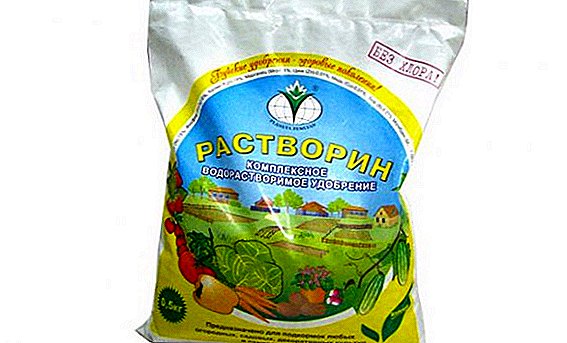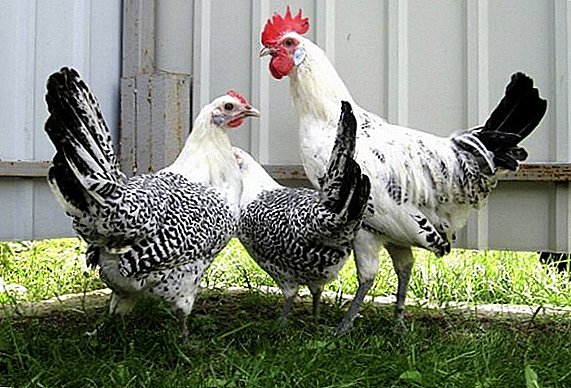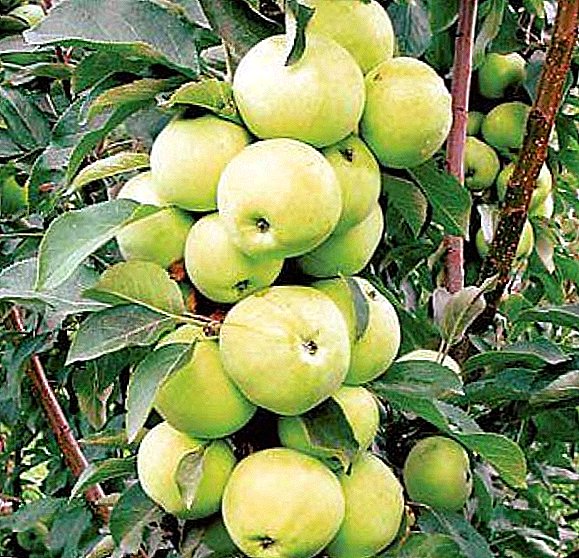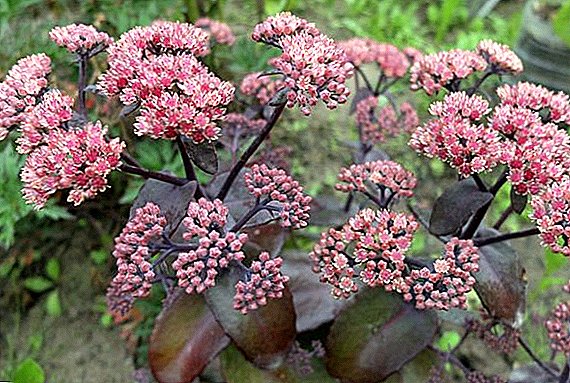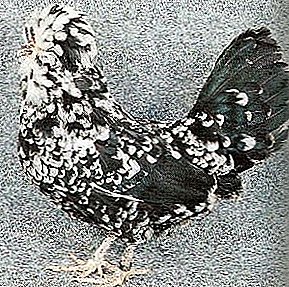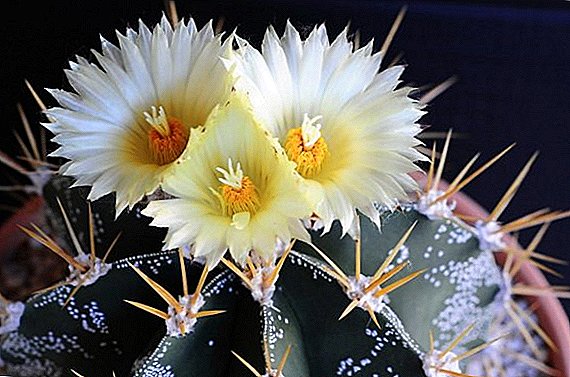 Cacti collectors like a small, star-like astrophytum. This is a plump ribbed spherical cactus.
Cacti collectors like a small, star-like astrophytum. This is a plump ribbed spherical cactus.
Caring for them is no more difficult than for other species. Learn how to grow astrophytum, and add this interesting specimen to your collection.
Botanical description of indoor plants
Names are often the most descriptive characteristics of plants. The Latin name Astrophytum asteria (astrophytum asterias) - designates a star cactus and characterizes the shape. Also there are the names of the sandy cactus - according to the area of distribution, sea urchin - because of the shape and small spines, Peyotl cactus (Williams lophophore) - for the similarity of the shape.
The genus consists of 10 species. Astrophytum prefers to grow on the rocky slopes of the mountains, limestones and sandstones. Natural distribution area: South America, Texas, Mexico. For reproduction, self-pollinated species are used than this genus and interesting to breeders. From one species, you can easily grow several hybrids.  Its spherical shape has a size of 5-15 cm in diameter and consists of 8 sections. The sides of the cactus are of a soft-ribbed form. The number of sections or sides of different types is different - from 5 to 8 pieces. Color - from green to grayish brown. Tiny white dots on the edges are small tufts of hairs that can suck moisture from the air. Some species of astrophytum have sharp spikes, while others have soft spikes or none at all.
Its spherical shape has a size of 5-15 cm in diameter and consists of 8 sections. The sides of the cactus are of a soft-ribbed form. The number of sections or sides of different types is different - from 5 to 8 pieces. Color - from green to grayish brown. Tiny white dots on the edges are small tufts of hairs that can suck moisture from the air. Some species of astrophytum have sharp spikes, while others have soft spikes or none at all.
If the plant grows in optimal conditions, it can bloom in spring from March to May, depending on the species. Yellow or white flower can reach 7-8 cm in diameter. Flowers are located on the top of the plant. The fruit is a drupe, sometimes gray, pink or reddish.
Important! Adult astrophitums are extremely difficult to care for. Plants can die for unknown reasons, subject to all rules on their content.
Main types
There are several of the most popular species of this cactus:
- Astrophytum asterias (star) - The most famous cactus of this genus. This plant is a spherical shape with 8 side faces in the shape of a star. It is an inhabitant of the stony ground of the deserts of Mexico and Texas. The diameter of the plant is 15 cm. Height is 8 cm. The surface is covered with white dots, hairs, spines are absent. Color - dark green. Flowers are yellow. Flowering time - spring;

- Astrophytum capricorne (Capricornus) - blooming cactus. The peculiarity of the astrophytum capricorn is that it begins to develop like a ball, and then it is drawn out and becomes cylindrical. Habitat - the desert in northern Mexico. The diameter of the plant is 10 cm. The height reaches 25 cm. It is a gray-green cactus with 7–9 pronounced ribs, very long curved thorns and yellow flowers with a red center. Flowering time is summer. The curved shape of its thorns served as the basis for the name because of its similarity to the goat horn;
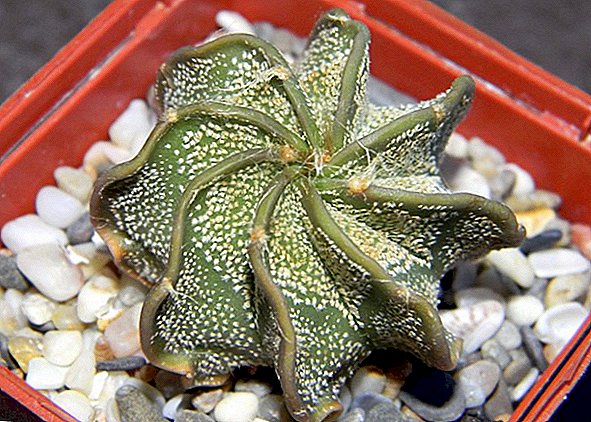
- Astrophytum caput-medusae (jellyfish head) - This is a particularly unusual cactus. Its cylindrical and very reduced stem resembles fingers. The shape is cylindrical, elongated, curved. Bush rarely, but there are also such specimens that slightly resemble coral. The height reaches 19 cm. The stalk is covered with small tubercles. In their youth, tubercles have a cylindrical or sometimes triangular shape, similar in shape to the leaves. Covered with bristles. The color is grayish. Flowers are small, not exceeding 0.5 cm in diameter, yellow. The fruit coat is covered with scales and white "wool". The shape of the fruit is spherical. Green colour;
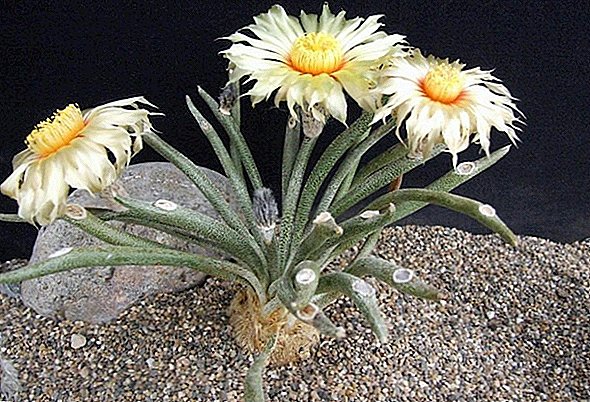
- Astrophytum coahuilense (Coahul) - succulent spherical shape with five ribs. Over time, it can be pulled into the cylinder. The ribs, having an acute shape at a young age, become more rounded as they grow. It grows in Mexico. Reaches 50 cm in height and 20 cm in diameter. The flowers are yellow with a characteristic red throat, although they can be pure red or very rarely pure yellow. Fruit color - from red to olive green and basalt;

- Astrophytum myriostígma (multifilament) grows in the highlands of northeastern and central Mexico. Among collectors it is valued as an original cactus without thorns. It can have from 3 to 7 pronounced edges (more often - five). New ribs may appear with age. The surface of the plant is covered with small white hairs, which gives it a white color. In youth, the cactus has a spherical shape with a diameter of 4-6 cm. Over time, it stretches into a cylindrical structure. The flower is white with a yellow center. Fruits are formed red, shaggy;

- Astrophytum ornatum (decorated) grows in Mexico. It grows mainly in wild canyons and on limestone rocks. It is also characterized by a star shape. The main feature of the plant is the transverse white strips of wool scales on the side edges. This species is considered the largest in the astrophytum family. It retains a spherical shape, reaching a diameter of 20 cm (in indoor floriculture). In the desert there are larger specimens. The color ranges from greyish green to dark green. It can form up to 8 edges of a straight form, but there are also edges running in a spiral. Flowers apical, large, lemon yellow, 7–12 cm wide. The inner segments of the perianth are broadly oblong, with a broad, more or less serrated apex.
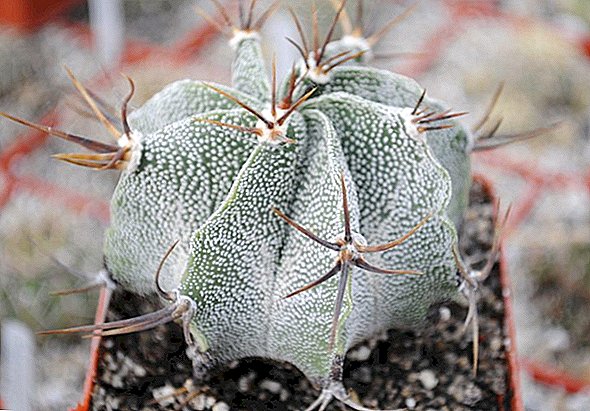
Did you know? The cactus "head of jellyfish" was opened only in 2002 and was even initially isolated into a separate species, because it does not look like any other cactus in the world.
Conditions for successful home cultivation
For all plants, without exception, when growing, they take into account the required degree of illumination, frequency and conditions of irrigation, air humidity and its temperature. For succulents, these parameters have different meanings at different times of the year. So, during the growing season, astrophytum is actively developing. This period begins in March and is pumped in September. In winter, the plant can tolerate lower temperatures and moderately consumes water.
Location
Provide the plant with bright diffused light. In direct sunlight, burns can occur on the surface. Some astrophitums can withstand bright sunlight, but it is advisable to use western and eastern windows for their placement. In the summer it is recommended to put the pots on the street at night so that they are protected from sudden rain.  In the summer, it is also desirable to pritenyat cactus in the afternoon, especially if it is installed on the western window. In winter, daylight hours, on the contrary, need to be increased by artificial lighting in the room up to 8-10 hours.
In the summer, it is also desirable to pritenyat cactus in the afternoon, especially if it is installed on the western window. In winter, daylight hours, on the contrary, need to be increased by artificial lighting in the room up to 8-10 hours.
Important! With a lack of lighting, the astrophytum will begin to stretch in length regardless of the natural shape and will begin to lose color. In such conditions, it will not be able to bloom.
Temperature conditions
Astrophytum grows well in hot climates. In summer, the metabolism occurs in it most actively, therefore, the comfortable temperature at home is + 22 ... + 28 ° С. In the period from October to spring, the succulents rest. During this period, the temperature can be gradually reduced to + 10 ... +14 ° C. Some astrophitums withstand temperatures up to + 4 ° C.
Air humidity
Humidity should be moderate, not higher than 60%. Available in the apartment, quite happy with cacti without any adjustments. If you are going to put them on the street, then at high humidity (rainy weather) they need to be cleaned and do not forget to process fungicides from bacteria and rot. 
Home care
Novice gardeners love cacti for ease of care. Most of them develop well, even if you do almost nothing. Novice gardeners are recommended to grow Astrophytum ornatum or Astrophytum myriostigma, which are not so demanding on the conditions. Plants need loose, well-drained mineral soil. They will also need a sufficiently lit place for growth and weekly watering in the summer. Add a little fertilizer, and your pets will enjoy steady, albeit slow growth.
Did you know? The US National Park Service installs microchips into cacti that grow in parks and belong to protected species in order to prevent their theft. Thieves dig up cacti, organizing illegal sales to nurseries and private homeowners. Chips help track and identify cacti after sales.
Watering features
Proper watering for astrophytum is a highlight. Do not overdo it with water. Succulents accumulate moisture, so some time can do without watering at all. In addition, some of these desert dwellers may even shrink and re-start development after a period of rain due to the preserved root.  Watering astrophytum divided into 2 periods and special conditions:
Watering astrophytum divided into 2 periods and special conditions:
- During the growing season, watering is carried out almost weekly. Water the plant so that it is abundantly saturated with moisture. Allow the soil to dry well. During the day, the plant does not grow and begins to actively consume moisture and nutrients after sunset, so water it after 18:00.
- In order to avoid soil compaction, some gardeners carry out bottom watering. Pour water at room temperature into the pan and leave for 20 minutes to allow the substrate to absorb the required amount of liquid, and then drain the residue. Do not leave water longer, so as not to create favorable conditions for the development of pathogens.
- From autumn to spring, watering is stopped, but they do it gradually. The irrigation rate is measured almost in drops (no more than 30 g) per plant and can be carried out no more than 1 time per month. An exception is the situation if the outline of the succulent sharpens, and you see that to maintain the shape you need to pour it. When the temperature drops below + 10 ° C, watering is completely stopped.
Watered usually with warm water. Spring watering begins when the plant shows signs of growth of new spines and young skin.
Did you know? Cactus spines are actually modified leaves that can supply nutrients from the air. Photosynthesis of cacti carries the stem.
Top dressing
The plant is fertilized once a month during the period of active growth. This may be the same fertilizer as for the rest of the cacti, but with a weak concentration. From spring to autumn, they often use balanced fertilizers, which in equal parts contain nitrogen, phosphorus and potassium - 20:20:20, or use fertilizers with a reduced proportion of nitrogen. Since the fall of the astrophytum stop feeding. Otherwise, a high concentration of mineral fertilizers in the soil can worsen the condition of the plant in winter.
Transfer
Astrophytum transplantation is carried out only when necessary. Fragile roots are difficult to recover and root, and the plants may die. The exceptions are situations where the roots exceed the space of the pot.
Before planting a cactus on the bottom of the pot, a layer of rubble, broken brick or expanded clay is laid to remove excess moisture from the roots. Decorative stones must be laid over the ground after transplanting. Otherwise, the pre-horns plant neck begins to rot.  Transplantation is carried out in the spring, as soon as the plant wakes up and begins to grow. This is evident from the outer color of the astrophytum. Its surface gets matte shine. For transplants use a pot 3-4 cm larger than the previous diameter.
Transplantation is carried out in the spring, as soon as the plant wakes up and begins to grow. This is evident from the outer color of the astrophytum. Its surface gets matte shine. For transplants use a pot 3-4 cm larger than the previous diameter.
Roots carefully move to another pot along with the ground. The plant before transplantation is not watered for several days. And transplanted from dry to dry substrate. The first time watering is carried out a week after transplantation.
Important! Adult cacti do not recommend replanting more than once every 5 years.
Breeding
Astrophytum reproduces only seeds. Seed germination is usually quite high. Practice spring sowing seeds. In order to sow the seeds of astrophytum, it is necessary:
- Prepare a substrate of leaf soil, coarse river or store sand and charcoal fines. All components are taken in equal proportions.
- The prepared components are mixed and moistened.
- Seeds are disinfected in warm water (+ 30 ... + 35 ° C) and in a weak solution of potassium permanganate for 20 minutes. Then laid on the paper for partial drying.
- Place the soil in a pot or container.
- Sow the seeds and sprinkle them on top with a layer of soil no thicker than 1 cm.
- Cover with glass or plastic to create a mini-greenhouse with an air temperature of about + 20 ° C.
- Remove glass or film regularly to ventilate and moisten the soil. Watering moderately after the complete drying of the soil. Excess moisture is not allowed.
- In a week, the first shoots will appear. As soon as the seedlings become stronger, they must be placed in separate pots.
 Planting seeds is carried out from March to August, that is, during the growing season.
Planting seeds is carried out from March to August, that is, during the growing season.
Difficulties in growing
Improper care of astrophytum can lead to diseases or pests. The main problem arises due to improper use of soil mixtures. The composition of the store soil probably contains peat, which contains many microorganisms, to which the astrophytum is not stable and may die.
Did you know? The light shade of the cactus spines reflects sunlight, thereby helping the plant to cool. In addition, the spines protect the plant from birds or animals that can use it as a source of moisture.
The main difficulties faced flower growers:
- Brown soft spots and mold at the bottom of the plant. The main reason is too abundant watering, especially at low temperatures. Or the high density of the soil, which can not well pass an excess of moisture. Change the soil mixture to loose, with a high content of sand or perlite.
- Brown spots on the ribs - the result of sunburn. Shade a window or relocate the plant to a more shaded area.
- Lightened areas of the surface - damage by pests or poor-quality watering with a high concentration of lime, lack of watering and low temperature during the growing season. Check your conditions with reference and make adjustments.
- Lengthening the stem is a sign of insufficient lighting or high temperature in the room.
Pests
The main insect pest for astrophytum is the scythe. This is a small insect from the family of coleoptera. It looks like a small round spot on the surface of a cactus.
Learn how to deal with the shield on indoor plants.
The insect's body covers a dense shield under which it is invulnerable to insecticides, so it is recommended to remove the pest manually with a small stick or toothbrush dipped in insecticidal soap solution.  Before starting work, you can cover the soil in a pot with paper or film to make it easier to collect the fallen insects. The areas damaged by insects can be treated with charcoal in order to avoid infection with phytopathogens.
Before starting work, you can cover the soil in a pot with paper or film to make it easier to collect the fallen insects. The areas damaged by insects can be treated with charcoal in order to avoid infection with phytopathogens.
Read about the most popular succulent plants for home cultivation.
Diseases
The main diseases of the astrophytum, as well as other cacti, are associated with various fungal and bacterial rot. A healthy and growing plant is fully capable of dealing with a small problem on its own. However, if it is attacked by pests, then phytopathogens penetrate through the damaged area of plant tissue. They can also penetrate rotting roots with excessive moisture and poor aeration.
If a problem is found, you will need:
- Prepare a sterile knife (treated with water with bleach or alcohol).
- Remove the plant from the pot.
- Inspect the roots and find all discolored areas, as well as spots of red or brown color.
- Cut off all affected areas.
- Sprinkle the cut surface with charcoal.
You can also use fungicides for processing, but they may not be effective against a variety of different fungi that cause decay. Periodic treatment of plants with copper-based fungicides is also used.
Did you know? Strange, but even small cacti have big roots. They may lie shallowly, but spread over a fairly wide area, covering an area of up to 2 m in diameter around the plant, so wide containers are preferred for planting cacti rather than pots.The next group of diseases can be caused by a lack of minerals in the soil. As a result, it became too alkaline. This is what happens when watering is produced from tap water with a high chlorine content. It accumulates in the soil and changes the level of acidity. Try to apply potassium dihydrophosphate to the soil, following the instructions on the package to the preparation. Watering with separated or rainwater also solves this problem.
 Diseases can also be associated with an excess of phytopathogens in the soil on the basis of peat. In this case, the plant looks faded, growth stops. Transplant astrophytum into suitable soil.
Diseases can also be associated with an excess of phytopathogens in the soil on the basis of peat. In this case, the plant looks faded, growth stops. Transplant astrophytum into suitable soil.Compliance with the rules of plant care will help you avoid most of the problems and will delight in flowering. But you must also take into account that the cactus is not a native to a temperate climate, and it can still die due to the effects of any of the existing natural factors. And this is not necessarily due to the mistakes of the grower.










